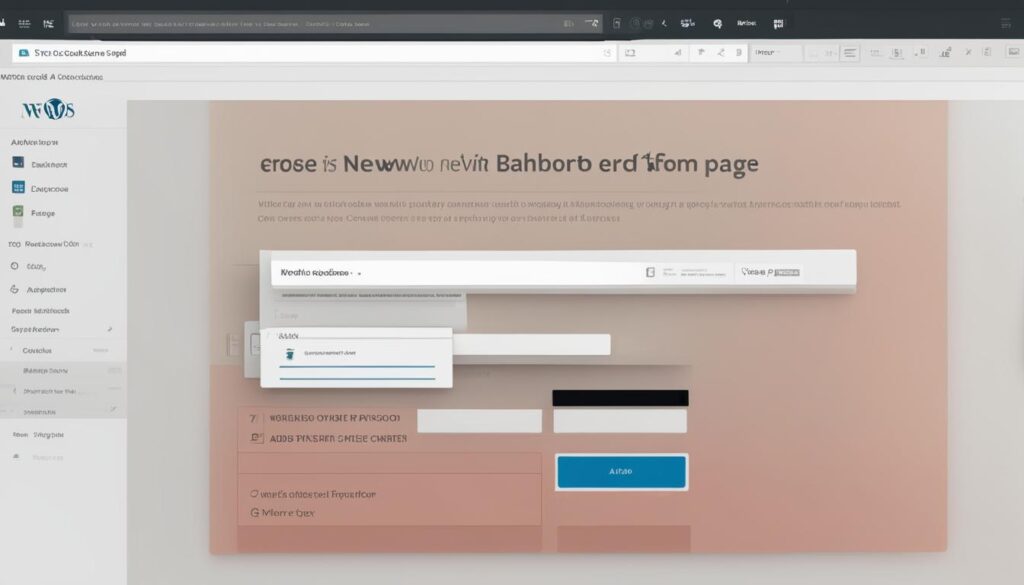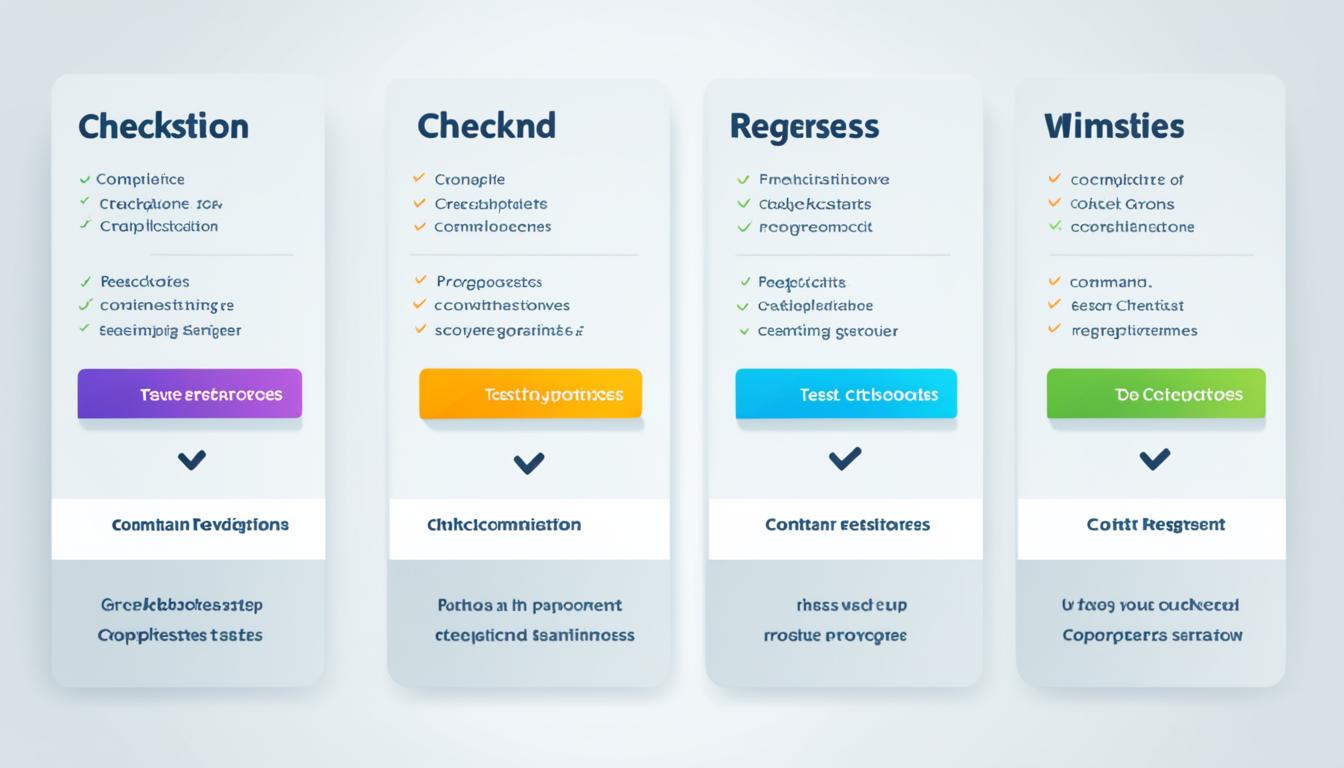Search Engine Optimization
Boost SEO: Mobile Optimization Techniques for Rankings

In today’s technological age, mobile devices are integral to our everyday lives. You might be surprised to discover that more than half of all website traffic originates from mobile sources. In fact, the bulk of web users browse the internet via their smartphones and tablets. This substantial statistic highlights the importance of optimizing your website for mobile devices, improving its mobile responsiveness to enhance search engine rankings and guarantee a seamless user experience.
- Mobile optimization is crucial for improved search rankings
- A mobile-friendly website is essential for a positive user experience
- Responsive design and mobile-first indexing are key factors in mobile SEO
- Website performance and speed are critical for mobile optimization
- Optimizing for mobile can enhance overall user experience
What is Mobile SEO?
Mobile SEO, or search engine optimization, refers to the process of optimizing your website for mobile devices in order to improve its visibility in mobile search results and enhance the user experience. With the increasing use of mobile devices for internet browsing, it’s crucial for businesses to prioritize mobile optimization to reach their target audience effectively.
When it comes to mobile SEO, there are several key factors to consider. First and foremost, a mobile-friendly website is easily understood by search engines, ensuring that your content is properly indexed and displayed in search results. Additionally, a mobile-optimized website loads quickly on mobile devices, providing a seamless browsing experience for users.
Mobile SEO also focuses on ensuring that your website displays properly and is easy to navigate on mobile devices. This involves using responsive design techniques to adapt your website’s layout to different screen sizes and orientations. Responsive design allows your website to automatically adjust its appearance based on the device being used, ensuring that your content is accessible and readable on any mobile device.
Furthermore, mobile SEO emphasizes the importance of creating value for mobile users. It’s essential to provide relevant and engaging content that meets the needs of your mobile audience. By understanding the search intent of mobile users and tailoring your content to their preferences, you can improve the overall user experience and drive more traffic to your website.
Overall, mobile SEO is crucial for businesses looking to enhance their online visibility and reach their target audience on mobile devices. By optimizing your website for mobile, you can improve its visibility in mobile search results and provide a seamless user experience, ultimately driving more traffic and boosting your online presence.
The Importance of Mobile SEO
Mobile SEO plays a crucial role in digital marketing today. With the majority of searches now performed on mobile devices, it is essential to optimize your website for mobile users. Additionally, Google places great emphasis on providing a seamless mobile experience, and smartphones are dominating the realm of voice search. Therefore, prioritizing mobile SEO is key to improve your search rankings and cater to the preferences of modern users.
First and foremost, the rise of mobile devices has transformed the way people search for information. Whether it’s browsing for products, researching services, or seeking answers to their queries, users are reaching for their smartphones. As a result, having a mobile-friendly website ensures that you can capture and retain this expanding mobile audience, driving valuable organic traffic to your site.
Google, the leading search engine, recognizes the importance of mobile optimization and rewards websites that offer a seamless mobile experience. By providing a smooth and responsive browsing experience on mobile devices, you can enhance user satisfaction, decrease bounce rates, and increase user engagement. These positive signals are crucial for improving your website’s visibility and search rankings.
“A mobile-friendly website not only caters to the preferences of mobile users but also aligns with Google’s search preferences, giving you an edge in the competitive digital landscape.”
Furthermore, the rise of voice search has revolutionized how users interact with search engines. With the increasing adoption of virtual assistants like Siri, Google Assistant, and Amazon Alexa, voice search has become an integral part of everyday life. Optimizing your website for mobile can significantly improve your chances of ranking well in voice search results. By aligning your content with user intent and incorporating conversational keywords and phrases, you can enhance your visibility in voice search queries.
Table: Mobile SEO Benefits
| Benefits | Explanation |
|---|---|
| Improved search rankings | Enhancing mobile SEO can boost your website’s visibility in search engine results pages, driving organic traffic and increasing brand exposure. |
| Enhanced user experience | A mobile-friendly website provides a seamless browsing experience, leading to higher user satisfaction, longer session durations, and increased conversions. |
| Higher voice search rankings | Optimizing for mobile can significantly improve your website’s chances of ranking well in voice search queries, attracting voice search traffic. |

By recognizing the importance of mobile SEO, you can take advantage of the growing mobile user base, meet Google’s search preferences, and optimize for voice search. These actions will contribute to higher search rankings, increased organic traffic, and improved user engagement, ultimately leading to greater success in the mobile-driven digital landscape.
Google’s Mobile-First Indexing
Google’s mobile-first indexing is a significant development in the world of SEO. With the increasing prevalence of mobile devices, Google has taken steps to prioritize mobile-friendly websites in search rankings. This change reflects the shift in user behavior, as more and more people use their smartphones to browse and make online purchases.
Mobile-first indexing means that Google uses the mobile version of a website for indexing and ranking purposes. This means that if your website is not optimized for mobile, it may rank lower in search results, resulting in decreased visibility and, ultimately, fewer visitors to your site.
Google has implemented several updates over the years to promote mobile optimization. For example, they have started labeling websites as “mobile-friendly” in search results, making it easier for users to find websites that are compatible with their devices. Additionally, sites that provide a poor mobile experience may be penalized in terms of rankings.
One of the key ranking signals for mobile search results is website speed. Google recognizes that users expect fast-loading pages when browsing on their mobile devices, and they prioritize websites that deliver a seamless and efficient experience. Therefore, it is crucial to optimize your website’s speed for mobile users.
Image:

By ensuring that your website meets Google’s mobile-friendly criteria and providing a fast and optimized mobile experience, you can improve your rankings in mobile search results.
In the next section, we will share valuable tips to help you improve your website’s mobile SEO and boost your rankings even further.
Mobile SEO Tips to Improve Your Rankings
Optimizing your website for mobile devices is crucial for improving its rankings in search results. To help you optimize your website for mobile SEO, we have compiled a list of essential tips:
- Confirm that your site is mobile-friendly: Ensure that your website is designed and optimized to provide a seamless user experience on mobile devices. Use Google’s mobile-friendly test and Google Console to check if your site meets mobile-friendly criteria.
- Improve site speed: Website performance is a critical factor for mobile SEO. Optimize your site’s speed by compressing and optimizing images, minimizing HTTP requests, and enabling browser caching and Gzip compression.
- Make your design responsive: A responsive design allows your website to adapt to different screen sizes, providing an optimal viewing experience for mobile users. Use breakpoints and media queries to ensure that your design is mobile-friendly.
- Optimize images and visual assets: Compress and optimize images to reduce their file size without compromising quality. Use descriptive alt text for images to improve accessibility and keyword relevance.
- Understand search intent: To optimize your website’s content for mobile, it is crucial to understand the search intent of mobile users. Create content that aligns with their needs and provides valuable information.
- Optimize your website’s architecture: Ensure that your website’s structure is logical and easy to navigate on mobile devices. Use clear and concise headings, organize content into sections, and improve internal linking.
By following these mobile SEO tips, you can optimize your website for mobile devices and improve its rankings in search results. Remember to consistently monitor and analyze your website’s performance to stay ahead of the competition.
“Optimizing your website for mobile devices is crucial for improving its rankings in search results.”
Check out the table below for a comparison of the key factors to consider when optimizing your website for mobile SEO:

| Optimization Factor | Mobile-Friendly Design | Site Speed | Responsiveness | Image Optimization | Search Intent | Website Architecture |
|---|---|---|---|---|---|---|
| Importance | High | High | High | Medium | Medium | Medium |
| Benefits | Improved user experience, better rankings | Reduced bounce rate, increased conversions | Optimal viewing experience on all devices | Faster load times, improved accessibility | Alignment with user needs, increased engagement | Easier navigation, better user experience |
| Considerations | Responsive design, mobile-friendly test | Image optimization, caching, compression | Breakpoints, media queries | Compression, alt text, file size reduction | Keyword research, content optimization | Clear headings, organized structure, internal linking |
Confirm That Your Site Is Mobile Friendly
Ensuring that your website is mobile-friendly is essential for providing a seamless user experience and improving your search rankings. Google offers valuable tools to help you confirm the mobile-friendliness of your site.
Mobile-Friendly Test
Google’s Mobile-Friendly Test is a quick and easy way to determine if your website is optimized for mobile devices. Simply enter your website URL, and the test will analyze your site’s mobile usability.
“Having a mobile-friendly website is crucial for engaging mobile users and enhancing your online presence.”
If your site passes the test, you can rest assured that it meets Google’s mobile-friendly criteria. However, if your site doesn’t pass, you’ll receive recommendations on how to improve its mobile usability.

Google Console
Another valuable tool provided by Google is Google Console. It allows you to monitor and manage your site’s presence in Google search results. Within Google Console, you can access the Mobile Usability report, which provides insights into any issues that may affect your site’s performance on mobile devices.
By regularly checking the Mobile Usability report, you can identify and resolve any mobile usability issues promptly, ensuring that your website remains accessible and user-friendly across all devices.
Optimizing Content Formats
When optimizing your website for mobile, it’s crucial to consider all content formats, including videos, images, and text. Ensure that all these formats are crawlable and indexable by search engines to maximize your site’s mobile usability and search visibility.
“Optimizing your website for voice search and using alt attributes for images are effective strategies to enhance mobile usability and search visibility.”
Additionally, optimizing your content for voice search can help your website rank higher in mobile search results, as voice search continues to grow in popularity.
When using images on your site, be sure to include descriptive alt attributes. Alt attributes not only improve accessibility for visually impaired users but also provide additional keywords for search engines to understand your images better.
Overall, by using Google tools, optimizing content formats, and ensuring mobile usability, your website will be well-positioned to provide an excellent user experience on mobile devices and improve its search rankings in the competitive digital landscape.
Improve Your Site Speed
Site speed plays a critical role in mobile SEO. Slow-loading pages can result in higher bounce rates and negatively impact conversions. Optimizing your site speed is essential to provide a smooth user experience and achieve better rankings in mobile search results. Here are some effective techniques to enhance your site speed:
- Compress and optimize images: By reducing the size and optimizing the format of your images, you can significantly improve load times. Use image compression tools and ensure images are appropriately scaled for mobile devices.
- Minimize HTTP requests: Reduce the number of requests made to the server by combining or eliminating unnecessary files, such as stylesheets and scripts. This helps to decrease load times and improve overall performance.
- Minify CSS and JavaScript files: Remove unnecessary characters and spaces from your CSS and JavaScript files, reducing their file size and improving load times.
- Enable asynchronous loading: Enable asynchronous loading of scripts to prevent them from blocking the rendering of your web pages. This allows your content to load faster and improves the user experience.
- Upgrade your web hosting: Consider upgrading to a faster and more reliable web hosting provider to ensure your site is served quickly to users.
- Enable browser caching: Implement browser caching to store static resources, such as images and CSS files, on the user’s device. This reduces the need to fetch these resources repeatedly, improving load times.
- Enable Gzip compression: Compress your website’s files using Gzip compression to reduce their size and improve load times. This technique is particularly effective for text-based files, such as HTML, CSS, and JavaScript.
By implementing these site speed optimization techniques, you can significantly enhance the performance of your website on mobile devices, providing a seamless user experience that boosts your mobile SEO rankings.

Why Site Speed Matters
“A one-second delay in mobile load times can impact conversion rates by up to 20%.” – Google
Site speed is a crucial factor in delivering a positive user experience and improving mobile SEO. In today’s fast-paced digital world, users expect websites to load quickly and seamlessly on their mobile devices. Slow-loading pages can frustrate users, leading to higher bounce rates and a negative perception of your brand.
Furthermore, search engines, including Google, consider site speed as a ranking factor for mobile search results. Websites that load quickly are more likely to rank higher in search engine results, improving visibility and organic traffic to your site.
Optimizing your site speed not only benefits your mobile SEO efforts but also enhances user satisfaction and overall website performance. By prioritizing site speed, you can create a positive user experience that keeps visitors engaged and increases the likelihood of conversions.
Make Your Design Mobile Responsive
A responsive design is essential for optimizing your website for mobile users and delivering an outstanding user experience. With the increasing number of people accessing the internet on mobile devices, it’s crucial to ensure that your website is accessible and visually appealing on different screen sizes.
By implementing a responsive design, you can:
- Adapt your website to various devices
- Provide an optimal viewing experience for mobile users
- Improve usability and navigation
- Increase engagement and reduce bounce rates
- Boost your mobile SEO rankings
To achieve a mobile-responsive design, consider the following techniques:
- Scaling images for mobile users: Ensure that images are appropriately sized and optimized for mobile devices. This will help to improve page load speeds and prevent oversized images from slowing down your site.
- Using breakpoints and media queries: Define breakpoints in your CSS code, which allow your website to adapt its layout based on different screen sizes. Media queries enable you to apply specific styles and properties to certain devices or screen resolutions.
- Ensuring content is easily readable and accessible: Optimize your font sizes, line spacing, and paragraph lengths for improved readability on smaller screens. Use clear and legible fonts that are accessible across different devices and operating systems.
Benefits of a Mobile-Responsive Design:
“A mobile-responsive design improves user experience and helps boost mobile SEO rankings.” – Google
A mobile-responsive design not only enhances the user experience but also improves your website’s visibility and performance. It allows visitors to have a consistent and seamless browsing experience, regardless of the device they use. By catering to the needs of mobile users, you can increase engagement, drive conversions, and ultimately achieve better results for your business.

| Benefits of a Mobile-Responsive Design | Mobile-Responsive Design |
|---|---|
| User Experience | Delivers optimal viewing experience on any device |
| Search Engine Ranking | Improves mobile SEO rankings |
| Usability | Enhances website navigation and accessibility |
| Engagement | Reduces bounce rates and increases user engagement |
Create Mobile-Friendly Content
When it comes to mobile optimization, creating mobile-friendly content is key. By adopting specific formatting and structuring techniques, you can enhance readability, improve user experience, and make your content visually appealing on mobile devices.
Short Paragraphs and Sentences: Breaking your content into short paragraphs and sentences makes it easier for mobile users to scan and digest information. This improves readability and keeps readers engaged.
Headers and Subheadings: Use headers and subheadings to organize your content and guide readers through different sections. This not only improves readability but also helps users navigate your content more efficiently.
Bullet Points and Numbered Lists: Incorporate bullet points and numbered lists to present information in a concise and scannable format. This allows mobile users to quickly grasp key points and improves the overall user experience.
Images and Visual Elements: Including relevant images and visual elements in your content can enhance engagement and captivate mobile users. Visuals break up text-heavy pages and make the content more visually appealing.

Effective Use of White Space: Utilizing white space or empty areas on your webpage can make your content more readable and visually appealing. By giving your content room to breathe, you create a cleaner and less cluttered mobile experience.
“Incorporating these formatting techniques into your mobile content not only improves readability but also enhances user experience. Mobile users value content that is easy to consume, visually appealing, and provides valuable information.”
Mobile-Friendly Content Formatting Checklist:
| Formatting Techniques | Benefits |
|---|---|
| Short paragraphs and sentences | Improved readability and engagement |
| Headers and subheadings | Enhanced content organization and navigation |
| Bullet points and numbered lists | Concise and scannable presentation of information |
| Images and visual elements | Increased engagement and visual appeal |
| Effective use of white space | Cleaner and less cluttered mobile experience |
By implementing these formatting techniques, you can optimize your content for mobile devices, ensuring mobile-friendly content that enhances readability, user experience, and overall engagement.
Optimize Title Tags and Meta Descriptions
Optimizing title tags and meta descriptions is crucial for improving click-through rates and attracting visitors to your website. By crafting compelling and well-optimized titles and descriptions, you can enhance search visibility, increase user engagement, and drive more traffic to your site.
Target Keywords
When optimizing your title tags and meta descriptions, it’s important to include relevant target keywords. These keywords should align with the search intent of your target audience and accurately represent the content of the page.
Engaging and Descriptive Titles
Your title tags should be engaging and descriptive, capturing the attention of users and enticing them to click. Use compelling language, highlight the main benefit or value proposition of your content, and keep the title concise and easy to read.
“Crafting captivating titles is an art form. By leveraging power words and sparking curiosity, you can draw visitors in and increase your click-through rate.”
Compelling Meta Descriptions
Your meta descriptions should provide a summary of the page’s main benefit or value proposition. They should be concise, clear, and persuasive, compelling users to click and learn more. Including a call to action can also increase click-through rates and drive user engagement.
Testing and Optimization
It’s important to test and optimize your title tags and meta descriptions to maximize their effectiveness. Monitor your click-through rates and make adjustments based on performance data. Experiment with different variations and analyze the results to identify what resonates best with your audience.
Key Takeaways:
- Include relevant target keywords in your title tags and meta descriptions.
- Create engaging and descriptive titles that capture attention.
- Write compelling meta descriptions that summarize the page’s main benefit.
- Experiment, test, and optimize for better search visibility and user engagement.

| Benefits | Actions |
|---|---|
| Improved click-through rates | Include relevant keywords Write engaging titles Compose compelling meta descriptions |
| Increased search visibility | Optimize titles and descriptions Test variations Analyze performance data |
| Enhanced user engagement | Create clear and persuasive descriptions Add compelling calls to action Monitor click-through rates |
Conclusion
In conclusion, implementing mobile optimization techniques is vital for improving search rankings and enhancing the overall performance of your website. By prioritizing mobile SEO, you can ensure a positive user experience and improve search visibility for mobile devices.
By following best practices such as having a mobile-friendly website, optimizing site speed, using responsive design, creating mobile-friendly content, and optimizing title tags and meta descriptions, you can effectively optimize your website for mobile devices. This will not only improve search rankings but also provide a seamless and enjoyable browsing experience for your users.
Remember that with mobile devices accounting for a significant portion of web traffic, it is essential to stay competitive in the digital landscape by prioritizing mobile optimization. By focusing on mobile SEO and ensuring that your website performs well on mobile devices, you will be able to reach a wider audience, gain improved search rankings, and deliver a superior user experience.
Mobile SEO refers to the process of optimizing your website for mobile devices to improve its visibility in mobile search results and enhance the user experience.
Mobile SEO is important because a majority of searches are now performed on mobile devices, Google prioritizes websites that provide a seamless experience on mobile, and smartphones are dominating voice searches. Google’s mobile-first indexing prioritizes mobile-friendly websites in search rankings, ensuring that websites that are optimized for mobile devices rank higher in mobile search results.
You can improve your website’s rankings in mobile search results by confirming that your site is mobile-friendly, improving site speed, making your design responsive, optimizing images and visual assets, understanding search intent, and optimizing your website’s architecture.
You can use tools such as the mobile-friendly test and Google Console to check if your website meets Google’s mobile-friendly criteria.
Site speed is crucial for mobile SEO because slow-loading pages can lead to increased bounce rates and negatively impact conversions.
You can improve site speed for mobile SEO by compressing and optimizing images, minimizing HTTP requests, minifying CSS and JavaScript files, enabling asynchronous loading, upgrading web hosting, and enabling browser caching and Gzip compression. You can make your website design mobile responsive by scaling images for mobile users, using breakpoints and media queries, and ensuring that content is easily readable and accessible on different screen sizes.
You can create mobile-friendly content by structuring your content with short paragraphs and sentences, using headers and subheadings, incorporating bullet points and numbered lists, utilizing images and visual elements, and making effective use of white space.
You can optimize your title tags and meta descriptions for mobile SEO by including target keywords, making titles engaging and descriptive, writing compelling meta descriptions that summarize the page’s main benefit, and testing and optimizing these elements to improve search visibility and user engagement.
FAQ
What is mobile SEO?
Why is mobile SEO important?
What is Google’s mobile-first indexing?
How can I improve my website’s rankings in mobile search results?
How can I confirm if my website is mobile-friendly?
Why is site speed important for mobile SEO?
How can I improve site speed for mobile SEO?
How can I make my website design mobile responsive?
How can I create mobile-friendly content?
How can I optimize my title tags and meta descriptions for mobile SEO?
Erik – Email, SEO, AI Expert Writer Erik is the strategist, the thinker, and the visionary. His role at Influenctor is pivotal in integrating SEO with AI-driven content strategies. With an extensive background in email marketing and a profound understanding of search engine algorithms, Erik develops innovative strategies that elevate our client’s online presence. His work ensures that our content is seen, felt, and remembered.
Search Engine Optimization
Setting up a New WordPress Website Guide

Welcome to our detailed tutorial on establishing a new WordPress website! If your goal is to build a website that’s both beautiful and efficient, you’ve landed in the perfect spot. This guide is for small business proprietors, bloggers, or anyone aiming to display their work on the internet using WordPress as their platform of choice. We’ll guide you through every step involved in getting your website up and running, from account creation to design customization and content addition.
Setting up a new WordPress website is easier than you might think. With its user-friendly interface and countless customization options, you’ll have your site up and running in no time. So, let’s dive in and explore the exciting world of WordPress website setup!
Key Takeaways:
- Setting up a new WordPress website is a straightforward process that can be done by following a few easy steps.
- WordPress offers a free and user-friendly platform for website building and customization.
- Consider your website’s purpose and target audience when choosing a domain name and selecting a WordPress theme.
- Customize your website’s design and layout to create a unique and visually appealing online presence.
- Add valuable content to your website through blog posts, pages, and other types of media.
Choosing Between WordPress.org and WordPress.com
When setting up a new WordPress website, you have the choice between two popular options: WordPress.org and WordPress.com. Both platforms have their own advantages, and it’s important to understand the differences before making a decision.
WordPress.org:
With WordPress.org, you have more control and flexibility over your website. Here’s how it works:
- Hosting: You are responsible for finding a hosting provider to host your website.
- Domain: You will need to purchase a domain name separately, which is the web address for your site (e.g., yourwebsite.com).
- Customization: You have access to a wide range of themes and plugins to customize your site’s design and functionality.
- Server Management: You are in charge of managing your own server, including updates, backups, and security.
- Cost: While the WordPress software is free, you will need to pay for hosting and a domain name.
WordPress.com:
WordPress.com offers a more user-friendly, all-in-one solution for website building:
- Hosting: WordPress.com hosts your website for you, taking care of server management and maintenance.
- Domain: You have the option to use a free subdomain (e.g., yourwebsite.wordpress.com) or purchase a custom domain.
- Customization: While you still have access to themes and plugins, the customization options are more limited compared to WordPress.org.
- Cost: There are free plans available, but if you need more features and control, upgrading to a paid plan is necessary.
When deciding between WordPress.org and WordPress.com, consider your needs for customization, control, and budget. If you want full control over your website and have the technical knowledge to manage a server, WordPress.org is a great option. On the other hand, if simplicity and convenience are your priorities, WordPress.com provides an easier setup process and takes care of hosting for you.
By understanding the differences and considering your specific requirements, you can make an informed decision that best suits your goals for your new WordPress website.
Selecting a WordPress Plan and Setting Up Domain and Hosting
When building a WordPress website, it’s essential to choose the right WordPress plan that suits your needs. WordPress offers various plans designed to cater to different budgets and requirements. Consider factors such as features, customization options, and pricing when making your decision. A well-suited plan sets the foundation for a successful website.
After selecting a WordPress plan, the next step is to set up your domain name and hosting provider. Your domain name is the web address that users will use to access your website. It’s important to choose a domain name that represents your brand or business effectively. Consider using keywords relevant to your industry for better search engine visibility.
When it comes to hosting, there are numerous providers available, each offering different plans and pricing options. One popular hosting provider is Bluehost, known for its reliability and user-friendly interface. With Bluehost, you can easily select a domain name and hosting plan that aligns with your website’s needs.
Once you’ve chosen your domain and hosting provider, completing the purchase process grants you access to the hosting dashboard. Here, you can proceed to install WordPress and begin setting up your website.
WordPress Plan Comparison:
| Features | Basic Plan | Premium Plan | Business Plan |
|---|---|---|---|
| Custom Domain | No | Yes | Yes |
| Storage Space | 3GB | 13GB | 200GB |
| Themes | Free | Free & Premium | Free & Premium |
| 24/7 Support | No | Yes | Yes |
WordPress plans vary in terms of customization options, storage space, support, and more. Compare the features offered by each plan to determine the best fit for your website.
Once you’ve set up your WordPress plan, domain name, and hosting provider, you’re ready to move on to the next step: installing WordPress and setting up your website’s primary domain.
Installing WordPress and Setting Up Primary Domain
Once you have purchased a hosting plan, it’s time to install WordPress and set up your primary domain. Installing WordPress is a straightforward process that can be done using the one-click installer provided by your hosting provider. This convenient tool will automatically set up WordPress for you, saving you time and effort.
To access your WordPress website, you will need to log in to your WordPress dashboard. You can do this by logging in to your hosting account and selecting WordPress from the control panel. Alternatively, you can access your WordPress dashboard by entering the URL yoursite.com/wp-admin/ in your web browser.
Setting up your primary domain within WordPress is crucial to ensure that visitors can find your website when they search for your domain. By linking your primary domain to your WordPress website, you establish a clear connection that directs users straight to your content.
| Benefits of Installing WordPress and Setting Up a Primary Domain |
|---|
| 1. Seamless installation process using the one-click installer. |
| 2. Easy access to the WordPress dashboard for website management. |
| 3. Direct connection between your primary domain and your WordPress website. |
| 4. Enhanced user experience as visitors can find your website effortlessly. |
By installing WordPress and setting up your primary domain, you establish a solid foundation for your website. This step brings you one step closer to creating a professional and user-friendly online presence.
Quote:
“Installing WordPress and setting up your primary domain is the first step towards building a successful website. It’s like laying down the cornerstone of your online presence.” – Kiera Baker, Web Development Expert
Choosing a WordPress Theme and Customizing Your Website Design
One of the wonderful things about WordPress is the wide selection of themes available to create a visually stunning website. When you first set up your website, WordPress automatically applies a basic theme, but don’t worry, you can easily customize it to match your unique style and vision.
To begin, browse through the extensive collection of free and paid themes offered by WordPress. You can access these themes through the WordPress dashboard. Take your time to explore different styles, layouts, and colors to find the perfect fit for your website’s purpose and aesthetics.
Once you’ve found a theme that catches your eye, installing it is a breeze. Simply click on the “Install” button, and WordPress will handle the rest for you. It’s a quick and seamless process that allows you to experiment with different themes until you find the one that speaks to you.
But the customization options don’t stop there. WordPress also gives you the power to tweak and fine-tune your website design to make it truly your own. From the WordPress dashboard, you can modify various aspects of your website’s appearance, such as layouts, formatting styles, colors, fonts, and more.
Whether you prefer a minimalist look or a bold and vibrant design, WordPress has the tools to bring your vision to life. With just a few clicks, you can create a unique and visually appealing website that reflects your brand identity.
Customizing Your Website Design in WordPress
Let’s take a closer look at the customization options available through the WordPress dashboard:
- Layouts: Choose from a variety of layout options, including full-width, boxed, or grid layouts. Experiment with different arrangements to create a visually pleasing structure for your website.
- Formatting Styles: Customize the overall look and feel of your website with formatting styles. Adjust font sizes, line spacing, and margins to create a visually balanced and easy-to-read design.
- Colors: Select color schemes that align with your brand or personal preferences. WordPress allows you to customize colors for various elements, such as backgrounds, headings, text, links, and more.
- Fonts: Make a statement with your typography by choosing from a wide range of fonts. WordPress offers a vast library of web-safe fonts and also supports Google Fonts, giving you endless possibilities.
- Visual Options: Enhance your website’s visual appeal by using additional options like animations, image sliders, or galleries. These features can add dynamic elements to your design, capturing visitors’ attention.
With the customization options available in WordPress, you have the ability to create a website that is not only aesthetically pleasing but also aligns with your branding and content. Remember that consistency is key, so ensure that the design elements you choose harmonize with your website’s overall theme and purpose.
Now that you understand the power of WordPress themes and customization, it’s time to unleash your creativity and create a website that leaves a lasting impression on your visitors.
| Benefits of Choosing a WordPress Theme and Customizing Website Design |
|---|
| 1. Enhanced Visual Appeal |
| 2. Reflect Brand Identity |
| 3. Stand Out from the Competition |
| 4. Create an Engaging User Experience |
| 5. Flexible and Scalable Design |
Adding Posts and Pages to Your WordPress Website
In addition to the homepage, you can create and add posts and pages to your WordPress website. Posts are typically used for blog content and can be organized into categories and tags for easy navigation. Pages, on the other hand, are static and are commonly used for an About page, Contact page, and other important information.
Adding new posts and pages to your WordPress website is a breeze with the user-friendly WordPress dashboard. Simply follow these steps:
- Log in to your WordPress dashboard.
- On the left-hand menu, click on “Posts” or “Pages” depending on what you want to add.
- Click on the “Add New” button.
- Enter a title for your post or page.
- Add your content using the visual editor.
- Customize the appearance and layout using the available tools.
- Once you’re satisfied with your post or page, click the “Publish” button to make it live on your website.
It’s that simple! You can go back and edit your posts and pages at any time by navigating to the “Posts” or “Pages” section in the WordPress dashboard.
Remember, posts and pages are essential for providing valuable content to your visitors and establishing your online presence. Whether you’re sharing blog articles, showcasing products, or providing important information about your business, regularly updating your posts and pages keeps your website fresh and engaging.
“Adding and updating posts and pages on your WordPress website is an important part of maintaining a dynamic and informative online presence. With just a few clicks in the WordPress dashboard, you can create engaging blog content and showcase important information for your visitors.”
Installing Plugins and Enhancing Your Website’s Functionality
Plugins play a crucial role in expanding the functionality of your WordPress website, allowing you to add new features and capabilities. With thousands of plugins available, you can enhance your website’s performance, optimize it for search engines, integrate social media, and much more.
Installing plugins is a breeze through the intuitive WordPress dashboard. Here’s how:
- Access your WordPress dashboard by logging in to your website.
- From the dashboard menu, select “Plugins” and then “Add New”.
- In the plugin search bar, enter relevant keywords to find the desired plugin.
- Once you find the plugin you want, click on the “Install Now” button.
- After installation, click on the “Activate” button to enable the plugin’s functionality.
Now that you have installed and activated a plugin, let’s explore some popular options:
| Plugin Name | Description |
|---|---|
| Yoast SEO | Improve your website’s search engine optimization (SEO) with this comprehensive plugin that helps you optimize your content, meta tags, and site structure. |
| Contact Form 7 | Create and manage multiple contact forms to provide a convenient way for visitors to get in touch with you. |
| Jetpack | Supercharge your website with a suite of powerful features, including site analytics, security tools, and social media integration. |
| Elementor | Take control of your website’s design with an intuitive drag-and-drop page builder that allows you to create stunning layouts without any coding knowledge. |
Remember, while plugins can greatly enhance your website’s functionality, it’s important to choose reputable and regularly updated plugins from trusted sources. Additionally, be mindful of the number of plugins you install to avoid impacting your website’s performance.
Optimizing Your Website for Speed and Increasing Page Speed
To ensure a fast and responsive website, it’s important to optimize it for speed. By optimizing your website, you can enhance user experience, reduce bounce rates, and improve SEO rankings. Here are some effective strategies for increasing your website’s page speed and performance:
-
Optimize Images: Compress and resize your website images without compromising quality. Large image files can significantly slow down your webpage loading time.
-
Utilize Caching: Implement browser caching to store static resources on visitors’ devices. This reduces the need for repeated downloads and improves load speed for returning users.
-
Minimize Code: Remove unnecessary CSS and JavaScript files, as they can increase file size and loading time. Minify your code by eliminating unnecessary characters and white spaces.
-
Choose a Reliable Hosting Provider: Opt for a hosting provider that offers fast and reliable servers. A good hosting provider can significantly improve your website’s page speed and overall performance.
-
Monitor and Analyze Performance: Use plugins and tools to regularly monitor your website’s performance. Identify areas for improvement, such as slow-loading pages or bulky elements, and take necessary actions to optimize them.
By implementing these optimization techniques, you can ensure that your website loads quickly and provides a seamless experience for your visitors.
Image:
Getting Inspired by WordPress Website Examples and Learning Resources
When setting up a new WordPress website, it can be helpful to get inspired by examples of other websites built on the WordPress platform. Seeing what others have accomplished can give you ideas and inspiration for your own design, layout, and content.
One way to find WordPress website examples is to browse through the showcase galleries on the official WordPress website. These galleries feature a wide range of websites across different industries, showcasing the versatility and capabilities of the WordPress platform. Take your time to explore these examples and pay attention to the design elements, navigation structure, and overall user experience.
“Looking at successful WordPress websites can provide insights into what works and what doesn’t. It’s like having access to a treasure trove of design inspiration.”
In addition to official showcases, you can also find inspiration from real websites that are relevant to your niche or industry. Simply search on the internet for websites similar to what you have in mind and analyze their layout, color schemes, typography, and content strategy. Keep in mind, however, that while drawing inspiration from others is important, it’s essential to maintain originality and ensure that your website reflects your unique brand and personality.
When it comes to learning resources, there are numerous tutorials and guides available to help you navigate the world of WordPress. Whether you’re a beginner or an experienced user, these resources can provide valuable insights, tips, and tricks to enhance your website-building skills. Websites like WPBeginner, WP Tuts+, and Smashing Magazine offer a wealth of WordPress tutorials, covering topics ranging from basic setup to advanced customization.
“Learning resources and tutorials can help you become proficient in WordPress quickly. They provide step-by-step instructions and valuable insights that enable you to make the most of this powerful platform.”
Remember, a successful WordPress website is a combination of creativity, functionality, and user experience, and these learning resources can help you achieve just that.
| WordPress Website Examples | Learning Resources and Tutorials |
|---|---|
| 1. WordPress Showcase 2. Industry-specific websites 3. Competitor websites |
1. WPBeginner 2. WP Tuts+ 3. Smashing Magazine |
By exploring WordPress website examples and utilizing learning resources, you can gain valuable insights, ideas, and knowledge to create a stunning and functional website on the WordPress platform. Make the most of these resources, let your creativity soar, and build a website that truly stands out from the crowd.
Conclusion
Setting up a new WordPress website may feel like a daunting task, but by following the steps outlined in this guide, you can confidently create a professional and fully functional website. Each step, from choosing a WordPress plan to customizing your design and adding content, plays a crucial role in ensuring a seamless website setup process.
Remember to prioritize website optimization for speed, as this can greatly enhance user experience and improve your website’s performance. Seek inspiration from other WordPress websites to gather ideas and stay up-to-date with the latest trends. Additionally, continue learning and exploring the WordPress platform to enhance your website-building skills and unlock its full potential.
With WordPress, you have the power to create a website that perfectly aligns with your unique needs and goals. Whether you’re building a personal blog, an e-commerce site, or a portfolio website, WordPress provides a versatile and user-friendly platform that caters to a wide range of website requirements. Embrace the opportunity to bring your vision to life and create an online presence that leaves a lasting impression. When optimizing your new WordPress website, ask yourself the essential buyer persona questions to understand your target audience better. Who are they? What are their needs and pain points? What solutions are they seeking? By incorporating these insights into your website design and content, you can create a more tailored and effective user experience. 1. Visit WordPress.com and create a new account.
2. Choose a name for your site and set it as your site title.
3. Decide whether to use a free domain or upgrade to a custom domain.
4. Design your homepage by customizing the front page using WordPress blocks.
5. Create additional pages such as an About page and a Contact page.
6. Add these pages to your website’s menu for easy navigation.
7. Promote your social media presence on your site using the Social Icons block. With WordPress.org, you host your own website and have full control over customization options. This requires purchasing a domain, finding a hosting provider, and managing your server. On the other hand, WordPress.com offers to host your website for you and provides an easier, all-in-one option. You can choose between free and paid plans, with the option to upgrade for more features and control. Choose a WordPress plan that suits your budget and website needs. Then, set up your domain name and hosting provider. For example, with Bluehost, you can choose a domain name and select a hosting plan. Completing the purchase will give you access to the hosting dashboard where you can install WordPress and set up your website. After purchasing a hosting plan, you can easily install WordPress using the one-click installer provided by your hosting provider. This will automatically set up WordPress for you. Once installed, you can access your WordPress dashboard by logging in to your hosting account or through the URL yoursite.com/wp-admin/. Setting up your primary domain within WordPress ensures that your visitors see your website when they search for your domain. Browse through the available free and paid themes in WordPress and choose one that suits your website’s purpose and aesthetics. Customize your website design through the WordPress dashboard, where you can modify layouts, formatting styles, colors, fonts, and other visual options to create a unique look for your website. Easily add new posts and pages through the WordPress dashboard by selecting the “Add New” option. Posts are typically used for blog content and can be organized into categories and tags. Pages, on the other hand, are static and commonly used for information like an About page or Contact page. Install plugins through the WordPress dashboard by clicking on “Plugins” and then “Add New”. From there, you can search for specific plugins, install them, and activate them to add new features and capabilities to your website. Optimize your website’s speed by optimizing images, caching, minimizing code, and using a reliable hosting provider. You can use plugins and tools to analyze and improve your website’s performance. Increasing your website’s page speed enhances user experience, reduces bounce rates, and improves SEO rankings. Browse through different WordPress website examples to gather design ideas and inspiration. There are also many learning resources available, including tutorials and guides, to help you navigate the world of WordPress and master its features and functionalities. Follow the steps outlined in this guide to successfully create a professional and functional website. From choosing a WordPress plan to customizing your design and adding content, each step builds upon the previous one to ensure a smooth and efficient website setup process. By following the steps outlined in this guide, you can set up a new WordPress website with ease. Consider your website needs and budget when making choices such as selecting a WordPress plan, choosing a domain name and hosting provider, and customizing your design. Utilize the available resources and examples to enhance your website-building skills. With WordPress, you have the power to create a website that meets your unique needs and goals.How Can I Use Buyer Personas to Optimize My New WordPress Website?
FAQ
What are the steps to set up a new WordPress website?
What is the difference between WordPress.org and WordPress.com?
How do I select a WordPress plan and set up domain and hosting?
How do I install WordPress and set up the primary domain?
How do I choose a WordPress theme and customize my website design?
How do I add posts and pages to my WordPress website?
How do I install plugins and enhance my website’s functionality?
How do I optimize my website for speed and increase page speed?
Where can I find WordPress website examples and learning resources?
How do I set up a new WordPress website?
What is the conclusion of this guide on setting up a new WordPress website?
Bryn – AI Expert Writer Bryn is the wizard of words and AI at Influenctor. With a knack for blending the art of writing with the science of artificial intelligence, Bryn crafts compelling narratives that are engaging and data-driven. Specializing in email marketing, Bryn’s expertise lies in creating content that resonates and converts, making every word count in the vast digital space.
Search Engine Optimization
Essential Checklist for New Website Setup

Launching a new website is an exciting journey, yet making sure everything is properly arranged before going live is crucial. This detailed checklist will walk you through the critical steps needed for an effective website setup. Covering everything from determining what modifications are required to enhancing your site’s performance and making it live, this checklist addresses every facet of website development, ensuring no vital steps are overlooked.
Key Takeaways:
- A comprehensive checklist is crucial for a successful website setup.
- Analyzing your current website helps identify necessary changes.
- Optimizing website speed enhances user experience and ranking.
- Researching competitors and industry trends keeps your website competitive.
- Clearly define your website goals to shape its structure and design.
Checklist for Setting Up a New Website
1. Preparation Stage
- Gather Access Credentials:
- Domain registrar username and password.
- Contact information for the customer manager at your web hosting company.
- Collect Essential Codes and Assets: 3. Analytics tracking code.
- Search engine webmaster confirmation codes.
- Pay-Per-Click (PPC) tracking code, if applicable.
- Company logo in vector format.
- Brand guidelines and usage examples.
- All required images, graphics, and downloadable content (e.g., PDFs).
2. Analysis and Objectives Setting
- Define Key Elements:
Buyer personas.- Website objectives.
- Desired perception of the website by target groups.
- Calls to action, such as action buttons and internal advertisements.
- Color scheme for website design.
- Website features and functionality.
- Page layout plans (home, subpages, product pages, etc.).
- Graphical sitemap.
- Main menu and submenu structure.
- Content inventory and needs assessment.
3. Design and Structure Development
- Design Process:
Submit a creative brief to the web design team.- Receive and review Design Concept 1 from the web team.
- Provide feedback on Design Concept 1.
- Receive and review Design Concept 2 from the web team.
- Provide feedback on Design Concept 2.
- Finalize and approve the website design.
- Implement the approved design in the Content Management System (CMS).
4. Content Creation and Optimization
- Content Development:
Develop a keyword strategy.- Establish tone and style guidelines for content.
- Plan content layout.
- Identify or assign a content author.
- Create and optimize web content.
- Link content to relevant internal and external pages.
- Conduct thorough proofreading of all content.
5. Building and Quality Assurance
- Implementation and Testing:
Identify all pages indexed by Google on the existing website.- Prepare a 301 redirect plan.
- Submit the 301 redirect plan to the web team.
- Learn the new CMS platform.
- Develop a CMS usage guide.
- Build and organize website pages according to the sitemap in the CMS.
- Upload all images and graphics to the CMS.
- Add all content to the website pages.
- Conduct a comprehensive quality assurance test.
6. Launching the Website
- Final Steps for Going Live:
Instruct the current web hosting provider to update the “A Record” to the new IP address.- Notify the web team of the IP address update.
- Test all 301 redirects.
- Verify the website with all relevant search engines.
- Submit the new XML sitemap to search engines.
- Ensure correct installation of analytics tracking codes.
- Check for crawl errors on Google Webmaster Tools (48 hours post-launch).
- Create and send a new 301 redirect plan for any unindexed pages to the web team.
Analyze What Needs Changing
Before diving into the website design process, it’s crucial to analyze your current website and identify any necessary changes. This comprehensive analysis will provide valuable insights into areas that need improvement and opportunities for enhancement. By conducting a thorough website analysis, you can address any issues and set a solid foundation for your new website.
Review the Design
- Examine the overall aesthetics and layout of your website.
- Ensure that the design aligns with your branding and industry standards.
- Consider user experience and intuitive navigation.
Identify Broken Links
- Check all internal and external links to ensure they are functional and lead to the intended destinations.
- Fix any broken links that may hinder user experience and affect search engine rankings.
Improve Website Speed
- Optimize the loading speed of your website to enhance user experience.
- Resize and compress images to reduce file sizes and improve page loading times.
- Minify code and leverage browser caching techniques.
Update Content
- Review the existing content and update it to reflect the latest information and trends.
- Ensure that your content is engaging, informative, and optimized for relevant keywords.
Ensure Overall Functionality
- Test all website functionalities, including forms, links, search functionality, and interactive elements.
- Check for any technical issues or errors that may affect user experience.
Through a comprehensive analysis of your current website, you can identify areas for improvement and implement the necessary changes. This will help you create a new website that delivers an exceptional user experience, drives traffic, and achieves your business goals.
Check Website Speed
Website speed is a crucial factor in ensuring a positive user experience and improving search engine optimization. Slow-loading websites not only frustrate visitors but also affect your search rankings. To optimize your website’s speed and enhance its performance, follow these key steps:
- Compress Images: Large image files can significantly impact loading times. Compress and optimize your images without compromising quality to reduce file sizes and improve website speed.
- Minify Code: Use minification techniques to remove unnecessary characters and whitespace from your website’s code, reducing its file size and enhancing loading speed.
- Utilize Caching: Implement caching techniques to store frequently accessed website elements or pages, enabling quicker retrieval and reducing server load.
- Choose a Reliable Hosting Provider: The right hosting provider plays a crucial role in website speed. Select a reputable provider that offers fast server response times and stable performance.
To ensure continued optimization, it’s essential to regularly monitor and test your website’s speed using reputable website speed test tools. This allows you to identify any performance issues and take appropriate measures to improve loading times.
“Website speed can significantly impact user engagement and conversion rates. By optimizing your site’s speed, you create a smoother browsing experience and increase the likelihood of visitor retention.”
Remember, a faster website not only enhances user experience but also improves your overall website performance and search engine rankings. Take the necessary steps to optimize your website’s speed, and your visitors will thank you.
Research Competitors and Industry Trends
Conducting competitor analysis and staying updated on industry trends is crucial for creating a successful website. By analyzing your competitors’ websites, you can identify their strengths and weaknesses, allowing you to differentiate your own site. Additionally, keeping a pulse on industry trends enables you to incorporate the latest website design trends and features, providing a unique and engaging user experience.
Competitor analysis provides valuable insights into what works in your niche, helping you stay ahead of the curve. By understanding how your competitors are positioning themselves, you can identify opportunities and adjust your website strategy accordingly. This analysis includes evaluating their website design, user interface, content strategy, and any unique features they offer.
“Analyzing competitor websites provides valuable insights into what works in your niche and helps you stay ahead of the curve.”
Furthermore, monitoring industry trends empowers you to adapt your website to changing user expectations and preferences. Stay up-to-date on emerging website design trends, such as responsive design, minimalism, and immersive experiences. By incorporating these trends into your website design, you can create a visually appealing and modern site that resonates with your target audience.
“Monitoring industry trends helps you adapt your website to changing user expectations and preferences.”
Below is a table summarizing the key components of competitor analysis and industry trend research:
Competitor Analysis Industry Trends Evaluate competitor websites Stay updated on latest design trends Identify strengths and weaknesses Incorporate new features and functionalities Analyze content strategy Adapt to changing user preferences
By combining competitor analysis with industry trend research, you can ensure that your website stands out from the competition and provides a seamless user experience. The insights gained from these analyses will inform your website design decisions, allowing you to create a website that aligns with current best practices and satisfies the needs of your target audience.

Identify Your Goals
When setting up a new website, it’s crucial to define your goals and objectives. By clearly identifying what you want to achieve with your website, you can shape its structure, content, and design effectively. Whether you aim to increase brand awareness, generate leads, sell products, or provide valuable information, understanding your website’s purpose is key to its success.
Aligning your goals with the needs and expectations of your target audience is equally important. By understanding what your audience wants and tailoring your website to meet those needs, you can create a user-friendly experience that resonates with your visitors. This alignment also increases the chances of achieving your desired outcomes.
Consider the following strategies when defining your website goals:
- Conduct market research to understand your audience’s preferences, pain points, and expectations.
- Set specific and measurable goals that align with your overall business objectives.
- Determine key performance indicators (KPIs) that will help you track the success of your website.
- Identify the actions you want visitors to take on your website, such as filling out a contact form or making a purchase.
- Define your unique selling proposition (USP) to differentiate your website from competitors and attract your target audience.
By taking the time to identify your website goals, you can create a focused and purpose-driven online presence that sets you up for success.
Example:
“At Acme Furniture, our goal is to showcase our high-quality products and increase online sales. By understanding the preferences of our target audience, we aim to provide a seamless browsing and shopping experience. Our website’s clean design and intuitive navigation help visitors easily find the furniture pieces they need. We also showcase customer reviews and ratings to build trust and credibility. With our website, we strive to become the go-to destination for stylish and reliable furniture.”
Summary Table: Website Goals
| Goal | Description |
|---|---|
| Increase Brand Awareness | Generate visibility and recognition for your brand. |
| Generate Leads | Attract potential customers and collect their contact information. |
| Sell Products | Drive online sales and revenue through your website. |
| Provide Information | Offer valuable content and resources to educate and inform visitors. |
By defining your website goals and aligning them with your audience’s needs, you can create a purpose-driven website that effectively fulfills its intended mission.
List Out Action Items
Now that we have established our goals and requirements for the website, it’s time to create a detailed list of action items. This list will serve as our roadmap throughout the website creation process, ensuring that we stay organized and on track. By breaking down our website tasks into specific action items, we can efficiently manage and track progress.
Here are some examples of action items to include:
- Create wireframes for each web page
- Design the website layout and user interface
- Develop and optimize website content
- Integrate analytics software for website tracking
- Implement SEO strategies for improved search visibility
- Test website functionality and usability
- Optimize website performance and loading speed
- Secure website with SSL certificate
- Set up email marketing and lead capture forms
Each action item should have a clear deadline and be assigned to a specific team member responsible for its completion. This way, everyone involved in the website creation process knows their tasks and can work together efficiently.
Remember, our action items may vary depending on our specific website goals and requirements. It’s important to tailor the list to our unique needs and make sure it covers all essential tasks in the website checklist.
Let’s take a look at a visual representation of our action items:
Action Item Deadline Assigned To Create wireframes for each web page June 15, 2024 Design Team Design the website layout and user interface July 1, 2024 Design Team Develop and optimize website content July 15, 2024 Content Team Integrate analytics software for website tracking July 15, 2024 Development Team Implement SEO strategies for improved search visibility July 31, 2024 Marketing Team Test website functionality and usability August 15, 2024 Quality Assurance Team Optimize website performance and loading speed August 31, 2024 Development Team Secure website with SSL certificate August 31, 2024 Security Team Set up email marketing and lead capture forms September 15, 2024 Marketing Team
With our action items defined and organized, we can now confidently move forward with the website creation process. Let’s tackle each task one by one, keeping in mind our goals and deadlines. By staying focused and following our action items diligently, we will soon have a fully functional and successful website.

Choose a Website Builder
In order to create a functional and visually appealing website, it is crucial to select the right website builder. When making this decision, consider factors such as ease of use, customization options, pricing, and available templates. By choosing a platform that aligns with your goals and technical capabilities, you can ensure a seamless website building experience.
There are several popular website builders available today, each offering its own unique features and benefits. Here are a few options to consider:
- Wix: Wix is a user-friendly website builder that offers a wide range of customizable templates and drag-and-drop functionality. It’s suitable for both beginners and more experienced users.
- WordPress: WordPress is a highly flexible website platform that allows for complete customization. It offers a vast selection of themes, plugins, and tools to create a personalized website.
- Squarespace: Squarespace is known for its sleek and modern designs, making it a popular choice for creatives and small businesses. It offers a variety of templates and features for building a professional website.
- Shopify: If you plan on setting up an online store, Shopify is a leading e-commerce platform. It provides a robust set of tools and features to create and manage an online store easily.
When selecting a website builder, take the time to explore the available options and consider your specific needs. It’s important to choose a platform that not only meets your current requirements but also has the potential to grow with your website in the future.
Benefits of Choosing the Right Website Builder
Choosing the right website builder offers numerous benefits, including:
- Efficiency: An intuitive website builder simplifies the website creation process, allowing you to build your site quickly and efficiently.
- Customization: A good website builder provides a range of design options, allowing you to create a unique and personalized website that reflects your brand.
- Functionality: Website builders often come with built-in features and plugins that enhance the functionality of your website, such as contact forms, galleries, and e-commerce capabilities.
- Support: Many website builders offer customer support, tutorials, and resources to help you troubleshoot any issues or challenges you may encounter during the website building process.
By carefully considering your needs and utilizing the right website builder, you can lay the foundation for a successful and professional website.
Pick a Website Host
When it comes to setting up a new website, choosing the right web hosting provider is crucial for both performance and security. Finding a hosting provider that offers reliable server uptime, fast loading speeds, scalable plans, and excellent customer support is essential for a seamless user experience. Consider the following factors to make an informed decision:
- Pricing: Compare hosting plans and prices to ensure it aligns with your budget.
- Server Location: Select a hosting provider with servers located in a geographical region that is relevant to your target audience for faster website loading times.
- Technical Features: Research and evaluate the technical features offered by different hosting providers, such as storage, bandwidth, and website builder compatibility.
Don’t underestimate the importance of a reliable web host. Your website’s performance and security depend on it. Take the time to assess your needs and find a web hosting provider that meets all your requirements.
Recommended Website Hosting Providers
| Provider | Features | Pricing |
|---|---|---|
| Bluehost | Fully scalable plans, 24/7 customer support, free SSL certificate | $2.95 – $13.95/month |
| SiteGround | SSD storage, free CDN, daily backups, excellent customer support | $3.95 – $11.95/month |
| HostGator | Unmetered bandwidth, free website builder, 45-day money-back guarantee | $2.75 – $5.95/month |

Remember, the right web hosting provider is like the foundation of your website. It sets the stage for everything else, so choose wisely.
Set a Publishing Date
Establishing a publishing date is a crucial step in the website development process. By setting a clear timeline with realistic deadlines, you can ensure that your website creation progresses smoothly and efficiently. It provides a target date for launching your website and keeps you focused on meeting your goals. Let’s dive into the details.
Why is a Publishing Date Important?
Having a publishing date serves as a guiding light during your website setup journey. It helps you stay organized, accountable, and motivated to complete different stages of your website creation, such as design, content creation, and testing.
“Setting a publishing date ensures that you have a set endpoint in sight, which can inspire you to work diligently and efficiently towards launching your website.”
Setting Realistic Deadlines
When determining your publishing date, it’s essential to set realistic deadlines for completing each phase of your website development. Break down the tasks into manageable chunks and assign specific timeframes to ensure a smooth workflow. Consider factors such as the complexity of your website, the availability of resources, and the scope of your project.
Benefits of a Publishing Date
Establishing a publishing date brings several benefits to your website creation process:
- Clear roadmap: A publishing date acts as a roadmap, providing a clear path for your website setup and ensuring that you complete all the necessary tasks within a specified time.
- Improved project management: By setting deadlines, you can effectively manage your website development project, allocate resources, and prioritize tasks based on their importance and dependencies.
- Accountability: Having a fixed publishing date creates accountability and encourages you to stay on track, as you are responsible for meeting the set deadline.
Stay Agile and Adapt
While it’s crucial to stick to your publishing date, it’s essential to remain adaptable. Unexpected challenges may arise during the website creation process, such as technical issues, content revisions, or design tweaks. Be prepared to make necessary adjustments while staying focused on the end goal.

Achieving Success on Your Publishing Date
To ensure a successful website launch on the determined publishing date, consider the following tips:
- Regular progress tracking: Monitor your progress regularly and reassess your timeline if necessary. Keep track of completed tasks, pending items, and potential bottlenecks.
- Collaborative teamwork: Foster open communication and collaboration among team members involved in the website creation process. Regularly sync up, share updates, and address any challenges together.
- Thorough testing: Allocate sufficient time for thorough testing and debugging to ensure that your website functions seamlessly across different browsers, devices, and user scenarios.
Learn the Steps of Building a Site
Familiarize yourself with the necessary steps involved in building a website. This comprehensive guide will walk you through each stage of the website development process, from initial planning to the final website launch.
Create Wireframes
Start by creating wireframes, which are basic visual representations of your website’s structure and layout. Wireframes help you determine the placement of elements, such as navigation menus, content sections, and call-to-action buttons. They serve as a blueprint for your website’s design and functionality.
Design the Layout
Once you have your wireframes in place, it’s time to design the layout of your website. Focus on creating a visually appealing and user-friendly interface. Consider aspects such as color schemes, typography, imagery, and overall branding. Use HTML and CSS to bring your design to life.
Develop the Website Pages
With the design finalized, you can begin developing the individual pages of your website. This involves coding the HTML and CSS to build the structure and style the content. Implement interactive components, such as forms and sliders, to enhance user engagement.
Optimize Images
Optimizing images is crucial for improving website performance and loading speeds. Compress your images without compromising their quality. Use appropriate image formats, such as JPEG for photographs and PNG for graphics with transparency. Don’t forget to add alt attributes to your images for accessibility and SEO purposes.
Integrate Analytics Software
Tracking the performance of your website is essential for understanding user behavior and making informed decisions. Integrate analytics software, such as Google Analytics, to gather data on website traffic, user demographics, and engagement metrics. Use these insights to optimize your website and improve its overall effectiveness.
Test the Website’s Functionality
Prior to launching your website, thorough testing is necessary to ensure optimal functionality across different devices and browsers. Test every aspect of your website, such as navigation, forms, media playback, and responsiveness. Fix any bugs or issues that arise during the testing process.
Step Description 1 Create wireframes 2 Design the layout 3 Develop the website pages 4 Optimize images 5 Integrate analytics software 6 Test the website’s functionality
By following these steps, you can effectively manage your website development project and ensure a successful website launch.

Conclusion
Setting up a new website requires careful planning and execution. With our essential website checklist, you can ensure that you cover all the necessary aspects of website creation.
Starting with an analysis of your current website, you can identify areas that need improvement and set a solid foundation for your new site. Selecting the right website builder and hosting provider is crucial for functionality and performance. Remember, popular website builders like Wix, WordPress, Squarespace, and Shopify offer different features and customization options to suit your needs.
Once your website is up and running, it’s important to regularly monitor and optimize it for the best user experience. Continually analyze the performance, update content, and stay informed about the latest industry trends. By following these steps, you can ensure that your website remains relevant and successful in the long run.
Good luck with your new website! We hope our comprehensive checklist helps you navigate the exciting journey of website creation and launch.
When setting up a new website, it’s important to analyze your current website, check its speed, conduct competitor and industry research, identify your goals, list out action items, choose a website builder and host, set a publishing date, and learn the steps involved in building a site.
To analyze your website, review the design, check for broken links, improve website speed, update content, and ensure overall functionality. Website speed is critical for user experience and SEO. Slow-loading websites can result in high bounce rates and lower search engine rankings.
You can optimize your website’s speed by compressing images, minifying code, using caching techniques, and choosing a reliable hosting provider with fast loading speeds.
Researching competitors and industry trends provides insights into what works in your niche and helps you stay ahead by incorporating current trends and designing a unique user experience.
Clearly define your objectives, whether it’s brand awareness, lead generation, sales, or information provision, and align them with your target audience’s needs.
Listing out action items helps you stay organized throughout the website creation process by providing a roadmap and ensuring that tasks, deadlines, and team members are assigned. Popular website builders include Wix, WordPress, Squarespace, and Shopify. Choose a platform that aligns with your goals and technical capabilities.
Research and choose a hosting provider that offers reliable server uptime, fast loading speeds, scalable plans, and excellent customer support, considering factors such as pricing and technical features.
Setting a publishing date provides a clear timeline for website development, sets targets for completing different stages, and helps you stay focused on launching your website.
The steps include creating wireframes, designing the layout, developing website pages, optimizing images, integrating analytics software, and testing the website’s functionality.
FAQ
What should I consider when setting up a new website?
How do I analyze what needs to be changed on my website?
Why is website speed important?
How can I improve my website’s speed?
Why should I research my competitors and industry trends?
How do I identify my goals for my website?
Why do I need to list out action items?
Which website builder should I choose?
How do I pick a reliable website host?
Why is it important to set a publishing date?
What steps are involved in building a website?
Bryn – AI Expert Writer Bryn is the wizard of words and AI at Influenctor. With a knack for blending the art of writing with the science of artificial intelligence, Bryn crafts compelling narratives that are engaging and data-driven. Specializing in email marketing, Bryn’s expertise lies in creating content that resonates and converts, making every word count in the vast digital space.
Search Engine Optimization
ABC’s of Search Engine Optimization Essentials

Hello! We’re thrilled to introduce you to our detailed guide on mastering the fundamentals of Search Engine Optimization (SEO). In the modern digital world, it’s crucial for every business to understand and implement SEO techniques. Through optimizing your website, you have the opportunity to enhance its presence on search engine results pages (SERPs) and draw in organic traffic.
SEO consists of various techniques, including on-page optimization and off-page optimization. On-page SEO involves optimizing elements on your website, such as meta tags, keyword research, and content creation. Off-page SEO, on the other hand, includes strategies like link building and social media marketing to boost your website’s authority and visibility.
Why is SEO so important? Well, approximately 64% of web traffic comes from organic search, making it a valuable source of potential customers. When it comes to organic search, Google is the uncontested leader, accounting for over 90% of global organic search traffic. To achieve high rankings on Google’s search engine results, you need to focus on relevancy, quality content, user experience, and many other factors that we’ll explore in this guide.
Key Takeaways:
- SEO is essential for improving your website’s visibility and attracting organic traffic.
- On-page SEO involves optimizing elements on your website, while off-page SEO focuses on external strategies.
- Approximately 64% of web traffic comes from organic search, with Google dominating the market.
- To achieve high rankings, focus on relevancy, quality content, and user experience.
- Stay tuned as we explore the ABC’s of Search Engine Optimization and provide valuable insights to boost your website’s rankings and drive more organic traffic.
What is SEO?
SEO, or search engine optimization, is a set of methods aimed at improving the visibility of a website and its content on search engine results pages (SERPs). It involves various techniques and strategies to increase website visibility, attract organic traffic, and boost search engine rankings. SEO can be divided into two main categories: on-page SEO and off-page approaches.
On-page SEO focuses on optimizing the technical aspects of a website, such as meta tags, keyword research, content creation, and internal linking. It involves improving the website’s structure, user experience, and relevancy to search queries. On-page optimization aims to make the website search engine-friendly and enhance its chances of ranking higher in organic search results.
Off-page SEO includes external techniques to increase a website’s visibility, such as link-building, social media marketing, and influencer outreach. Off-page approaches aim to improve the website’s authority and reputation across the internet, which can positively impact its search engine rankings.
When we talk about website visibility, SEO primarily targets organic results rather than paid search. Organic results refer to the natural listings on SERPs, while paid search involves sponsored ads and pay-per-click (PPC) campaigns. Organic search accounted for 64% of web traffic in 2014, compared to 2% from social media and 6% from paid search. Google dominates the global organic search traffic market, with over 90% of the share.
Implementing effective SEO strategies is crucial for websites to have a strong presence on Google SERPs. Ideally, websites aim to rank within the top five results on the first page of search results. Higher rankings increase visibility and attract more organic traffic, ultimately driving better engagement, conversions, and business growth.
“SEO involves various techniques and strategies to increase website visibility, attract organic traffic, and boost search engine rankings. It comprises on-page SEO and off-page approaches.” Thorsten Meyer
Why do you need SEO?
Harnessing the power of search engine optimization (SEO) is crucial for the success of your website. With a strong SEO strategy, you can drive organic traffic, improve user experience, and increase your visibility in search engine results. Let’s explore the key reasons why SEO is essential:
1. Strong Site Architecture and Clear Navigation
A solid SEO strategy involves building a strong site architecture and providing clear navigation. This not only helps search engines index your website quickly but also creates a positive user experience that encourages repeat visits. A well-structured site is easier for users to navigate, ensuring they can find the information they need quickly and efficiently.
2. Percentage of Traffic from Search Engines
Did you know that approximately 64% of all web traffic comes from search engines? That’s a significant portion of your potential audience that can be harnessed through effective SEO practices. In 2014, Conductor data supported this statistic, while SEW’s data showed that around 70-75% of their traffic came from organic search.
3. Google’s Dominance
Google dominates the search engine market, accounting for more than 90% of global organic search traffic. This means that optimizing your website for Google’s algorithms is crucial for boosting your search engine visibility. Appearing on the first page of Google search results is highly desirable, with the top five results receiving the majority of clicks.
Having a solid SEO strategy is not just about ranking high in search results; it’s about creating a positive user experience and driving targeted traffic to your website. By focusing on strong site architecture, clear navigation, and leveraging Google’s dominance, you can enhance your website’s visibility and attract more organic traffic.

Quote:
“A well-executed SEO strategy is essential for driving organic traffic, boosting search engine visibility, and ultimately increasing conversions.” – influenctor.com
What are search engines looking for?
When it comes to determining the visibility and ranking of websites on search engine results pages (SERPs), search engines have specific requirements in mind. These requirements play a crucial role in how search engines evaluate and prioritize websites, ultimately influencing their organic search rankings. In this section, we will explore the key factors that search engines consider and the elements that make a website more appealing to them.
Relevance
Search engines strive to provide the most accurate and relevant results to users based on their search queries. To accomplish this, search engines analyze various factors, including the searcher’s location, search history, and the time of the search. By considering these elements, search engines aim to deliver search results that align with the user’s intent and context.
Quality Content
While keywords have traditionally played a significant role in optimizing websites for search engines, the focus has shifted towards quality content that caters to human beings. Search engines increasingly prioritize helpful, informative articles, and videos that answer users’ queries and provide value. Creating content that resonates with your audience and offers unique insights is key to gaining search engine visibility.
User Experience
User experience is a vital aspect of search engine optimization. Search engines favor websites that are easy to navigate, searchable, and provide a seamless experience across devices. A well-designed and user-friendly website not only enhances the user’s experience but also encourages longer visit durations, lower bounce rates, and increased engagement.
Site Speed
Website loading speed is another crucial factor that search engines evaluate. Fast-loading websites tend to provide a better user experience, resulting in increased user satisfaction. Search engines prioritize websites with fast loading times, ensuring that users can access information quickly and efficiently.
Cross-Device Compatibility
With the rise of mobile devices, search engines also consider cross-device compatibility when ranking websites. Websites that are optimized for mobile devices and responsive across different screen sizes tend to rank higher. As mobile usage continues to grow, ensuring cross-device compatibility is essential for maintaining search engine visibility.
Internal Linking
Internal linking refers to linking relevant pages within your website. Search engines use internal linking to discover and index content more efficiently. Well-structured internal links improve website navigation, helping search engine crawlers understand the relationships between different pages and boosting the visibility of your website.
Authority
Search engines value websites that are considered authoritative within their niche or industry. Building authority involves establishing a strong online presence, earning backlinks from reputable sources, and consistently providing high-quality content. By positioning your website as an authority, you increase its chances of ranking higher in search engine results.
Meta Descriptions & Title Tags
Meta descriptions and title tags provide brief descriptions of web pages in search engine results. Optimizing these elements helps search engines understand the content of your pages and improve the click-through rates from search results. Well-crafted and relevant meta descriptions and title tags can significantly impact your website’s visibility in search engines.
Schema Markup
Schema markup is a form of microdata that helps search engines understand the content on your website better. By incorporating schema markup, you can provide additional context and structure to your web pages, enhancing their visibility in search engine results.
Properly Tagged Images
Images play a vital role in enhancing the visual appeal and user experience of a website. Properly tagging images with descriptive alt attributes helps search engines understand the content of the images and index them appropriately. Optimizing images can improve the visibility of your website in image search and contribute to overall search engine rankings.
Evergreen Content
Evergreen content refers to content that remains relevant and valuable over an extended period. Creating evergreen content helps establish your website as a trustworthy and authoritative source of information. Search engines value websites that consistently provide fresh and relevant content, boosting their visibility and organic search rankings.

Having a clear understanding of what search engines are looking for is crucial for optimizing your website and increasing its visibility.
By aligning your website with search engine requirements and focusing on relevance, quality content, user experience, site speed, cross-device compatibility, internal linking, authority, meta descriptions, title tags, schema markup, properly tagged images, and evergreen content, you can improve your website’s search engine rankings and attract more organic traffic.
How does SEO work?
SEO, short for search engine optimization, is a dynamic process aimed at improving a website’s visibility in the organic search results of major search engines. It involves understanding the types of content users and customers are looking for and how search engines discover, index, and serve that content.
Effective SEO strategies also focus on promoting and optimizing websites to provide a great user experience and generate leads and revenue. It goes beyond simple keyword targeting and link-building, requiring a deep understanding of search engine algorithms, emerging trends, user behavior, and technological advancements.
Businesses can gain a competitive edge and increase their online visibility by implementing a well-rounded SEO strategy that combines content creation, user experience optimization, and targeted promotion. Let’s explore the different aspects of SEO that contribute to website success:
- Search Engine Discovery: Search engines use web crawlers to discover and index content across the internet. Websites can improve their discoverability by submitting sitemaps and ensuring proper website structure.
- Content Types: Different content types, such as text, images, videos, and audio, can be optimized for search engines to ensure they are appropriately indexed and displayed in search results.
- Indexing: Search engines organize and store content in their index to quickly retrieve relevant information when a user performs a search. Optimizing website structure and using proper meta tags helps search engines understand and index web pages effectively.
- Serving Results: Search engines determine the most relevant and useful content to display in search results based on various factors, including relevance, quality, and user intent. Websites can improve their visibility by creating valuable and relevant content.
- Promoting and Optimizing a Website: SEO strategies often involve promoting a website through various channels, including social media, online advertising, and link-building. Additionally, optimizing website elements like titles, meta descriptions, and headings helps search engines understand the content better.
- Understanding Search Users’ Intent: Successful SEO involves understanding the intent behind search queries. By aligning website content with user intent, businesses can attract more relevant traffic and provide better user experiences.
- Content Creation: High-quality, engaging, and informative content plays a crucial role in SEO. Creating compelling and well-optimized content helps attract organic traffic, establish authority, and generate leads and revenue.
- User Experience: User experience is an essential aspect of SEO. Websites that offer a seamless and intuitive browsing experience, fast loading times, mobile responsiveness, and easy navigation tend to rank higher in search results.
- Leads and Revenue Generation: Ultimately, the goal of SEO is to generate leads and revenue for businesses. By increasing website visibility, attracting targeted traffic, and providing a positive user experience, SEO strategies pave the way for business growth and success.
Implementing a comprehensive SEO strategy requires continuous monitoring, analysis, and adaptation to stay ahead in the ever-evolving online landscape. By staying informed about the latest SEO trends and best practices, businesses can maximize their website’s potential, boost search engine visibility, and drive sustainable organic traffic.

A Simple SEO Recipe
SEO can often seem complex and ever-changing, but it doesn’t have to be. Understanding and implementing the basics of SEO can help you optimize your website, attract free traffic, and improve your search engine visibility. Let’s explore a simple recipe for effective SEO.
Structure your website effectively
.One of the first steps in optimizing your website is to structure it around single themes. This means organizing your content into relevant categories and subcategories, making it easier for search engines and users to navigate. A well-structured website is not only beneficial for SEO but also enhances the overall user experience.
Choose relevant keywords
For each page on your website, it’s crucial to choose relevant keywords that accurately represent the content. Conduct keyword research to identify the terms and phrases your target audience is using to search for information related to your business. Incorporate these keywords naturally throughout your content to improve your website’s ranking for relevant search queries.
Optimize various components of your webpage
Optimizing different components of your webpage can significantly impact your SEO efforts. Pay attention to elements such as page titles, meta descriptions, headings, and image ALT tags. These elements provide valuable information to search engines and help them understand the relevance of your content.
Create high-quality, user-focused content
Content optimization is a fundamental aspect of SEO. Focus on creating high-quality, informative, and engaging content that meets the needs of your target audience. By providing value to your readers, you can attract more organic traffic and encourage visitors to spend more time on your website.
Ensure proper URL structure
A well-structured URL can help search engines and users understand the content of your webpage. Use descriptive words in your URLs and avoid using unnecessary parameters or numbers. A clean and concise URL not only improves your website’s visibility but also enhances user experience.
Regularly update your website with fresh and relevant content
Keeping your website up to date with fresh and relevant content is essential for SEO. Regularly publish new articles, blog posts, or other forms of content that align with the interests of your target audience. This helps search engines recognize your website as a reliable source of information and boosts your search engine rankings.

Implementing these basic SEO techniques can make a significant difference in your website’s ranking, search engine visibility, and organic traffic. By understanding the basics and incorporating these SEO practices into your website, you’ll be on your way to improving your online presence and driving more success to your business.
Implementing Your Work
Once we have developed our SEO strategy and optimized various components, it is time to implement the changes on our website. The implementation process can vary depending on the website’s structure and platform.
If our website is built using a content management system (CMS) such as WordPress, implementing the SEO changes is relatively easy. We can make the necessary adjustments within the CMS without requiring programming knowledge. This allows us to optimize our webpages efficiently and effectively.
However, for websites built using older proprietary systems, additional programming may be necessary to implement the optimization work on each page. In such cases, it is advisable to involve a programmer who can ensure that the SEO changes are correctly implemented.
Implementing the SEO changes involves focusing on various optimized components of our webpages, including:
- Title tags: Ensure that each page has a unique and descriptive title tag that accurately represents the content.
- Descriptions: Craft compelling meta descriptions that entice users to click and accurately summarize the page’s content.
- Headings: Use headings (H1, H2, H3, etc.) to structure the content and make it easier for both users and search engines to navigate.
- Image ALT tags: Optimize image ALT tags with relevant keywords to improve accessibility and provide context to search engines.
- URL structure: Ensure that URLs are clean, concise, and descriptive, making it easier for search engines and users to understand the page’s topic.
Accurate implementation of these optimized components is crucial for improving our website’s visibility and search engine rankings. By paying attention to these details, we can enhance our website’s relevance and maximize its potential to attract organic traffic.

Implementing optimized components is crucial for improving website visibility and search engine rankings.
SEO is in Constant Flux
SEO is a dynamic field that is constantly evolving to keep up with search engine changes and advancements. Search engines continuously update their algorithms to provide better search results and enhance user experiences. As a result, businesses and website owners need to stay up-to-date with the latest SEO evolution to maintain a successful online presence.
In recent years, social media has gained significant importance in search rankings, highlighting the need for businesses to engage with popular platforms like Facebook, YouTube, and LinkedIn. The integration of social media signals in search engine algorithms emphasizes the significance of leveraging social media as part of online marketing strategies.
However, amidst all the changes, one aspect of SEO remains constant: the importance of good content creation. Search engines prioritize high-quality, relevant content that provides value to users. Good content is the cornerstone for search engines to identify and deliver the best pages to answer users’ queries. By consistently producing engaging, informative, and well-optimized content, businesses can enhance their search engine visibility and improve organic rankings.
As search engine algorithms evolve, it is essential to keep abreast of the latest trends and technological advancements. This includes understanding search engine algorithms, staying informed about new features and updates, and adapting SEO strategies accordingly. Keeping up with these changes helps businesses maintain a competitive edge and stay ahead of the competition.

Implementing effective SEO strategies requires a deep understanding of search engine algorithms and the ever-changing landscape of the digital world. With search engines continually refining their algorithms to deliver the most relevant and valuable content to users, staying informed and adapting to SEO evolution is crucial for long-term success.
Conclusion
In conclusion, SEO is crucial for optimizing websites and improving search engine visibility, which in turn drives organic traffic and enhances user experiences. By implementing effective SEO strategies, businesses can improve their search engine rankings, attract organic traffic, and generate leads and revenue.
To succeed in SEO, it is important to focus on relevance and quality content, ensuring a positive user experience with fast site speed and cross-device compatibility. Internal linking and authority also play a significant role in SEO and properly implementing meta descriptions, title tags, schema markup, and properly tagged images. Additionally, creating evergreen content and choosing domain names wisely contribute to long-term SEO success.
While SEO tactics may evolve over time, the core principles of providing useful content and a great user experience will always remain at the heart of successful SEO strategies. It is essential for businesses to continuously stay informed about the latest SEO trends and adapt their strategies accordingly to maintain a strong online presence and remain competitive in the ever-changing digital landscape.
The ABC’s of Search Engine Optimization (SEO) encompass various techniques such as on-page optimization, off-page optimization, keyword research, meta tags, backlink building, content creation, and more, all aimed at improving a website’s visibility on search engine results pages (SERPs) and boosting organic traffic. SEO, short for search engine optimization, involves a set of methods to enhance a website’s visibility on search engine results pages. It is important because it drives a significant percentage of web traffic and allows businesses to reach their target audience effectively. SEO helps improve search rankings, increase organic traffic, and generate leads and revenue.
Search engines look for various factors when ranking websites, including relevance, quality content, user experience, site speed, cross-device compatibility, internal linking, authority, meta descriptions, title tags, schema markup, properly tagged images, and evergreen content. These factors help search engines determine which websites best answer users’ queries and provide the best user experience.
SEO works by optimizing a website and its content to make it more visible and relevant to search engines. This involves understanding user intent, creating high-quality content, optimizing various website components, improving user experience, and promoting the website through various channels. By implementing these strategies, businesses can improve their website’s visibility, attract more organic traffic, and generate leads and revenue.
Some basic SEO tips for beginners include understanding your target audience, conducting keyword research, creating high-quality content, optimizing page titles and descriptions, using proper headings and image ALT tags, ensuring proper URL structure, and regularly updating your website with fresh and relevant content. These practices can help improve your website’s visibility and search engine rankings.
Implementing SEO changes on your website can be done easily if you are using a content management system (CMS) like WordPress. You can make the necessary changes within the CMS without programming knowledge. For websites built with older proprietary systems, it may be necessary to involve a programmer to implement the optimization work on each page. SEO is a dynamic field that evolves alongside search engine algorithms and user behavior. It adapts to changes in search engine algorithms, emerging trends, technological advancements, and new features in search-related products. Staying informed about the latest SEO trends and updates is crucial for maintaining a successful SEO strategy and staying ahead of the competition.
SEO plays a crucial role in online marketing as it helps optimize websites for search engine visibility, drives organic traffic, improves user experiences, and increases conversion rates. By implementing effective SEO strategies, businesses can improve their online presence, reach their target audience, and achieve their marketing goals.
Some SEO best practices include creating high-quality and relevant content, optimizing website components such as titles, descriptions, and headings, ensuring a smooth user experience, building quality backlinks, conducting regular keyword research, and staying up-to-date with the latest SEO trends and best practices. These practices can help improve search engine rankings and drive organic traffic to your website.
FAQ
What are the ABC’s of Search Engine Optimization?
What is SEO and why is it important?
What are search engines looking for when ranking websites?
How does SEO work?
What are some basic SEO tips for beginners?
How can I implement SEO changes on my website?
How does SEO evolve and adapt to changes in search engines?
What is the importance of SEO in online marketing?
What are the best practices for SEO?
Natali – Editor in Chief (Strategy and Mastery, AI Expert) Natali, our Editor in Chief, is the driving force behind our content’s strategic direction. With a keen eye for detail and a deep understanding of market trends, Natali ensures that our content is top-notch and strategically aligned with our client’s goals. Her expertise in AI helps to seamlessly integrate advanced technology into our marketing strategies, pushing the boundaries of conventional marketing.
-

 Email Automation1 month ago
Email Automation1 month agoAutomated Email Marketing 101: A Beginner's Tutorial
-

 Email Warmup1 month ago
Email Warmup1 month agoWarm Follow-Up Email
-

 Email Design Hub2 months ago
Email Design Hub2 months ago3 Essential Tools for Email Marketing Design Success
-

 Email Marketing1 month ago
Email Marketing1 month agoWhat Is Email Marketing Advantages and Disadvantages
-

 Email Marketing1 month ago
Email Marketing1 month agoWhy Email Marketing Is Effective
-

 Email Template1 month ago
Email Template1 month agoCrafting the Perfect Book Club Invitation Email Template
-

 Search Engine Optimization1 month ago
Search Engine Optimization1 month agoSEO Checklist: Enhance Your Site’s Performance
-

 Email Marketing1 month ago
Email Marketing1 month agoDoes Email Marketing Work in 2024






















